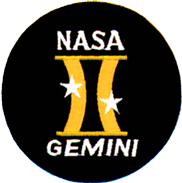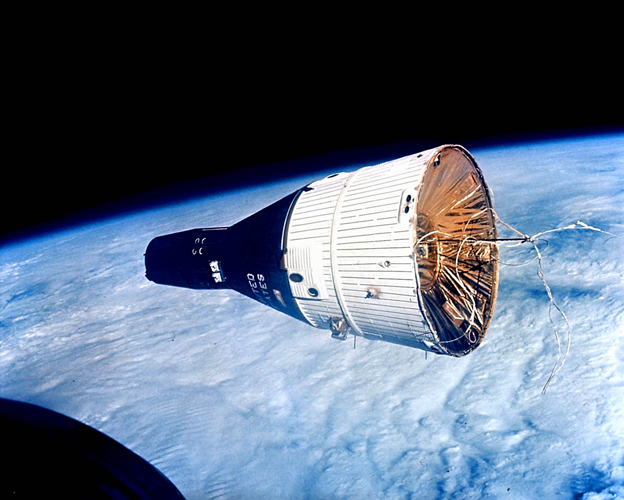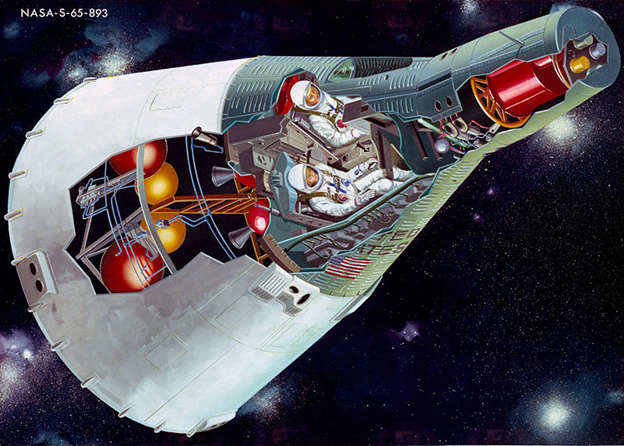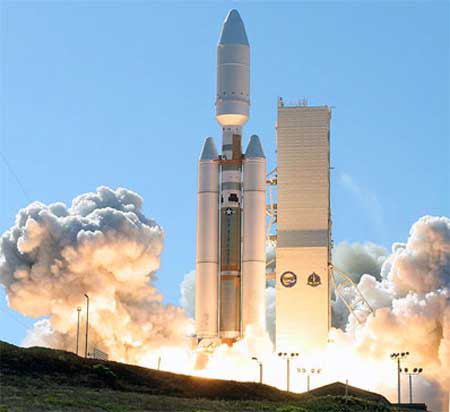NASA's Manned Space Vehicles

Project Gemini
The Gemini project started on January 3, 1962 and ended in 1966. It was launched into orbit that same year. The Gemini program was needed to provide support capabilities for the Apollo spacecraft. It was used for research that would later enable docking and space walks. It was also used for precision landing points, and docking with other vehicles. Experimentation also would provide insight into what crew members would be doing during flight and see how deep in space we can go. It was known as the "Bridge to the Moon". It was the enlargement of Mercury program. The Gemini was a reconstruction of the spacecraft Mercury. Its crew members gave it the nickname Gemini because of the twin stars, Castor and Pollux.
Gemini Space Craft
The Gemini Project is an enlargement of the Mercury capsule measuring 19 feet long and 10 feet in diameter. It weighed in at about 8400 pounds of metal. Engineers made the capsule big enough for two people and easy to maneuver. It was the first spacecraft to have an onboard computer. It was launched in January of 1962. It housed enough power for two men to stay alive. It was equipped with ejector seats and parachutes for the landing. The Titan Rocket propelled it into orbit.
Titan Rocket
The Titan Rocket was the rocket that sent the Gemini Project into space. It was used between 1959 and 2005 to launch spacecraft into orbit. A total of 368 rockets of this family were launched into orbit. Titans were part of the American intercontinental ballistic missile deterrent until the late 1980s, and lifted other American military payloads as well as civilian agency intelligence-gathering satellites. Titans also were used to send highly successful interplanetary scientific probes to Mars, Jupiter, Saturn, Uranus and Neptune.
Gemini Missions
On March 23, 1965, the Gemini Program started. The first mission was Commanded by Gus Grissom with John Young, and Molly Brown as a crew. The Gemini Titan 3 was the first space craft to carry a computer for guidance and it was powered by the Titan rocket.
On June 3, 1964 Gemini 4 with crew members James McDivitt and Edward White set a four day endurance record. On this flight Edward White would perform the first American spacewalk lasting twenty-one (21) minutes.
On August 21, 1965 Gemini 5 commanded by Leroy Gordon Cooper and Pete Conrad would set a world endurance record for eight (8) days in orbit.
On December 4, 1965 Gemini 7 with Frank Borman and Jim Lovell aboard set an endurance record of thirteen (13) days and became the first American crew to rendezvous with another manned spacecraft.
On December 15, 1965 Gemini 6 commanded by Walter Schirra and Thomas Stafford, rendezvoused with Gemini 7 which was one foot away.
On September 12, 1966 using Gemini-11, Pete Conrad and Richard Gordon became the first mission to use an autopilot reentry and landing. The mission also set a new record altitude of 850 miles. Gemini-11 also made a rendezvous and docking with a target Agena module. Pete Gordon made two spacewalks as part of this mission.
On November 11, 1966 Gemini 12 with Jim Lovell and Edwin "Buzz" Aldrin would make three spacewalks totaling five and one half (5.5) hours. During these spacewalks they performed several simple tasks with tools outside the spacecraft.
← Project Mercury Apollo →

